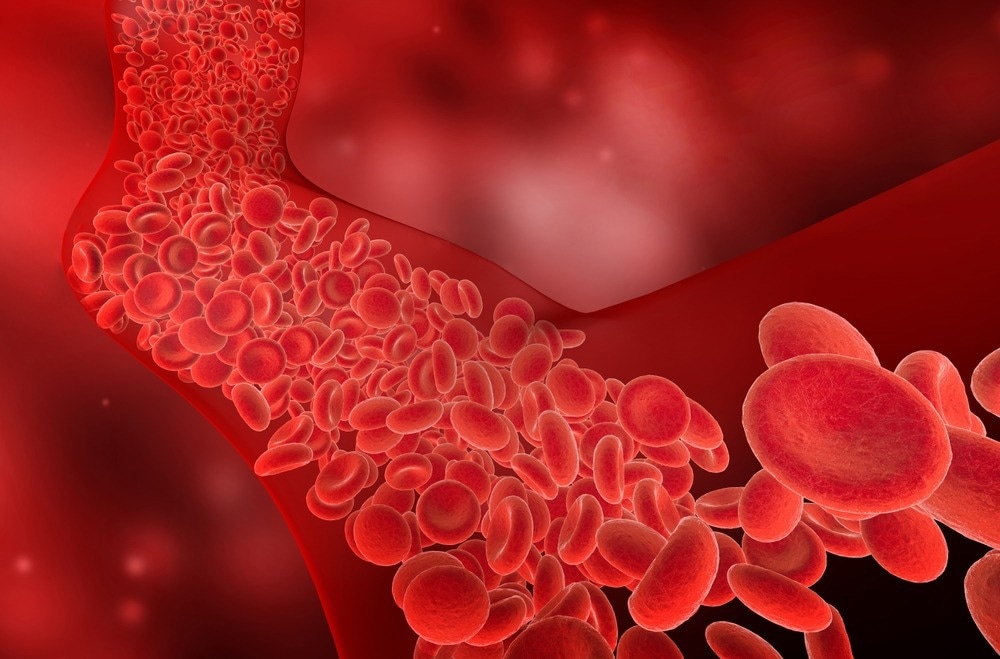Proteins in blood may help to predict Parkinson’s disease up to seven years before the onset of motor symptoms
In a recent study published in Nature Communications, researchers combined mass spectrometry-based proteomic phenotyping with machine learning to identify blood biomarkers in early Parkinson’s disease (PD).
Background
PD is an increasingly prevalent neurological condition affecting the central nervous system, presenting with motor and non-motor symptoms due to alpha-synuclein aggregation in dopaminergic cells. The clinical heterogeneity of the disease and the lack of easily measurable biomarkers challenge current strategies. Peripheral fluid biomarkers, such as the axonal marker neurofilament light chain (NfL), have shown longitudinal increases correlating with motor and cognitive PD progression.
Developing disease-modifying and preventative measures requires an improved understanding of the initial events in PD molecular pathogenesis, objective and less-invasive peripheral fluid biomarkers, and biofluid assays. Biomarkers that can detect PD early might boost population-based screening for identifying at-risk patients, perhaps enrolling them in future preventative studies and enhancing disease monitoring.
About the study
In the present study, researchers developed a targeted multiplexed proteomic mass spectrometry assay to identify individuals at risk of Parkinson’s disease.
The exploratory cohort comprised drug-naïve PD patients (eight males, mean age of 67 years) and ten healthy controls (five men, mean age of 66 years) from the DeNoPa cohort. The validation cohort comprised 99 individuals with newly diagnosed motor Parkinson’s disease (49 males, mean age of 66 years), 36 healthy control individuals (HC, 20 men, mean age, 64 years), and 29 individuals with other neurological disorders (OND, mean age of 70 years). The prodromal validation cohort included 54 pre-motor individuals with isolated rapid eye movement (REM) sleep behavior disorder (iRBD, 27 males, mean age, 68 years).
The researchers used targeted plasma proteomics in phase I and refined the results with liquid chromatography-mass spectrometry (LC-MS) in phase II. In phase I, they classified patients with Parkinson’s disease and controls using linear support vectors. They investigated the relationship between proteins and clinical data by comparing protein expression in PD patients and controls (from phase I) to the Mini-Mental State Examination (MMSE), Hoehn & Yahr stage (H&Y), and Unified PD Rating Scale (UPDRS) I-III scores. In this phase, they examined the correlations and clustering heatmaps of proteins detected by targeted mass spectrometry with clinical ratings in controls and PD patients.
In Phase II, the researchers created a validated, high-throughput, multiplexed mass spectrometric targeted proteomic assay based on the putative biomarkers revealed during the discovery phase. In this phase, they also found significant protein differences between HC and de novo PD (DNP), OND, and prodromal isolated REM sleep behavior disorder (iRBD) groups.
The researchers collected participant blood and cerebrospinal fluid (CSF) samples. They identified proteins using mass spectrometry and assessed protein expression with enzyme-linked immunosorbent assays (ELISA) and nephelometry. They evaluated the role of differentially expressed protein molecules in molecular processes using pathway analyses. They determined de novo PD diagnosis using the United Kingdom Brain Bank criteria and validated iRBD diagnosis using video-recorded polysomnography (vPSG).
Results
The machine-learning algorithm accurately identified PD patients and classified 79% of pre-motor individuals up to seven years before motor symptom onset. The model used eight blood biomarkers, including granulin precursor (PGRN), endoplasmic reticulum (ER)-chaperone-BiP, mannan-binding-lectin-serine-peptidase-2 (MASP-2), prostaglaindin-H2-D-isomaerase (PTGDS), complement C3, interceullular-adhesion-molecule-1 (ICAM-1), plasma-protease-C1-inhibitor (C1-inh), and Dickkopf-WNT-signaling pathway-inhibitor-3 (DKK3), which correlated with symptom severity.
The researchers identified three key pathway clusters: serine protease inhibitor molecules or serpins, coagulation and complement components, heat shock- and endoplasmic stress-associated proteins, and vascular cell adhesion molecule 1 (VCAM1), protein phosphatase-3 catalytic subunit beta (PPP3B), and SELE expression. Inflammatory pathways were the most significant, followed by those controlling protein folding, heat shock proteins, and ER stress.
The de novo PD and iRBD groups showed increased expression of serine protease inhibitors (SERPINA3, SERPINF2, and SERPING1) and C3. The team observed PGRN downregulation in all groups (PD, iRBD, and OND) compared to controls. PTGDS, CST3, VCAM1, and PLD3 were upregulated similarly in the OND and PD groups. PD patients had reduced PPP3CB, DKK3, SELE, and GRN levels. Deep phenotyping indicated 100% (54 out of 54) had RBD on polysomnography, 89% (48 out of 54) had hyposmia, and 92% (22 out of 24) had neuronal alpha-synuclein positive, as evidenced in CSF by seed amplification assays. Over a 10-year follow-up period, 16 patients (20%) developed PD or Lewy body dementia (DLB).
The study highlights a blood panel to identify at-risk individuals in clinical trials to delay and prevent motor PD. The biomarker panel detects protective and harmful pathways, including oxidative stress, neuroinflammation, α-synuclein aggregation, and Lewy body formation. The panel detected these characteristics in prodromal non-motor (stage 2 NSD) patients up to seven years before motor or cognitive symptoms appeared. Future studies would involve independent cohort validation, panel refining, and developing and validating new biomarkers to discriminate between clinical syndromes.
Source link : News-Medica

